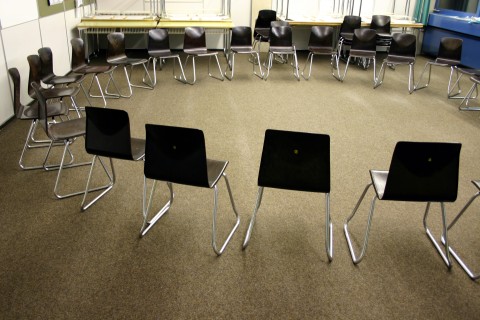What if classrooms were shaped by a restorative justice sensibility?
Creating space for a different kind of engagement

“Hospitality calls me to consider the singularity of each person, the diversity of needs.” Mary Rose O’Reilley offers this insight in her slim gem of a book Radical Presence: Teaching as Contemplative Practice. Two years ago, I hosted a conversation about it with several colleagues. We came from different disciplines, united in our desire to think more deeply about pedagogy, more critically about unwelcome trends in higher education, and more clearly about our hunch that vulnerability in the classroom is a good worth pursuing. We spent a satisfying two hours together, and in the months since—as our paths have crossed, mostly in perfunctory meetings—we’ve remembered it fondly. But our lives are busy. Those unwelcome trends continue to rob us of time and energy.
This past year I recalled that experience in the context of other challenges. In response to events in our community and in the world, another campus group came together to talk about restorative justice. It’s a concept I always cover briefly when I teach Christian ethics. I lingered longer on it this spring in light of what feels like a fraught, fragile time.
Restorative justice names a constellation of convictions and practices that redefines wrongdoing broadly and its impacts specifically. Where the modern judicial system centers on offenders and their punishment, restorative justice expands the circle to those who have been victimized and to the wider community.




